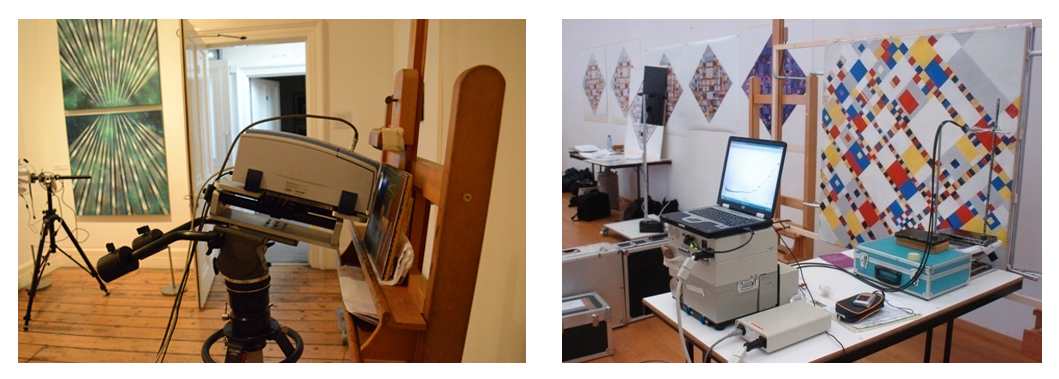
Reflection infrared spectroscopy is used for the identification and characterization of organic and inorganic materials. Revealing the nature of the functional groups constituting the molecules it provides the molecular identification of the investigated material. In particular, it enables the identification of the majority of the inorganic pigments (with some limitations to those constituted by metal oxides) and several classes of organic pigments. The technique may also be used to characterize organic materials such as binding media or varnishes; indicating the functional groups present, it is possible to identify the various classes of organic compounds (lipids, proteins, waxes, acrylics, vinyls and alkyds). It is also particularly useful for the study of alterations or surface contaminations.
There are two FTIR portable instruments available at the CNR-ISTM: the ALPHA Bruker spectrometer and NIR JASCO 9600.
The ALPHA spectrometer consists of an infrared source and a Globar DLaTGS detector. A system of parabolic mirrors allows to send and collect (22°/22°) the infrared radiation reflected from a surface located about 1 cm away in a spectral window ranging from 7500 cm-1 to 400 cm-1. The spatial resolution is about 28 mm2, and a spectral resolution of 4 cm-1 is typically employed.
The JASCO NIR spectrometer works in the spectral region of the near infrared (12500 – 4000 cm-1 ) and therefore involves the vibrational modes of overtones and combination. It consists of a halogen lamp as source and an InGaAs detector. The spectral resolution is 4 cm-1 and the sampling area of about 12 mm2. The spectrometer is equipped with a 2 m fiber optic probe.
References:
F. Rosi, C. Miliani, et al. An integrated spectroscopic approach for the non invasive study of modern art materials and techniques” Applied Physics A, 100; 2010 pp. 613.
C. Miliani, F. Rosi et al. Reflection infrared spectroscopy for the non-invasive in situ study of artists’ pigments. Applied Physics A-Materials Science & Processing 106; 2012 pp. 295-307.
D. Buti, F. Rosi et al., In-situ identification of copper-based green pigments on paintings and manuscripts by reflection FTIR. Analytical and Bioanalytical Chemistry 405, 2013 pp. 2699-2711.
Monico L., Rosi F, Miliani C. et al. Spectrochimica Acta Part A-Molecular And Biomolecular Spectroscopy 116, 2013 pp. 270-28.
